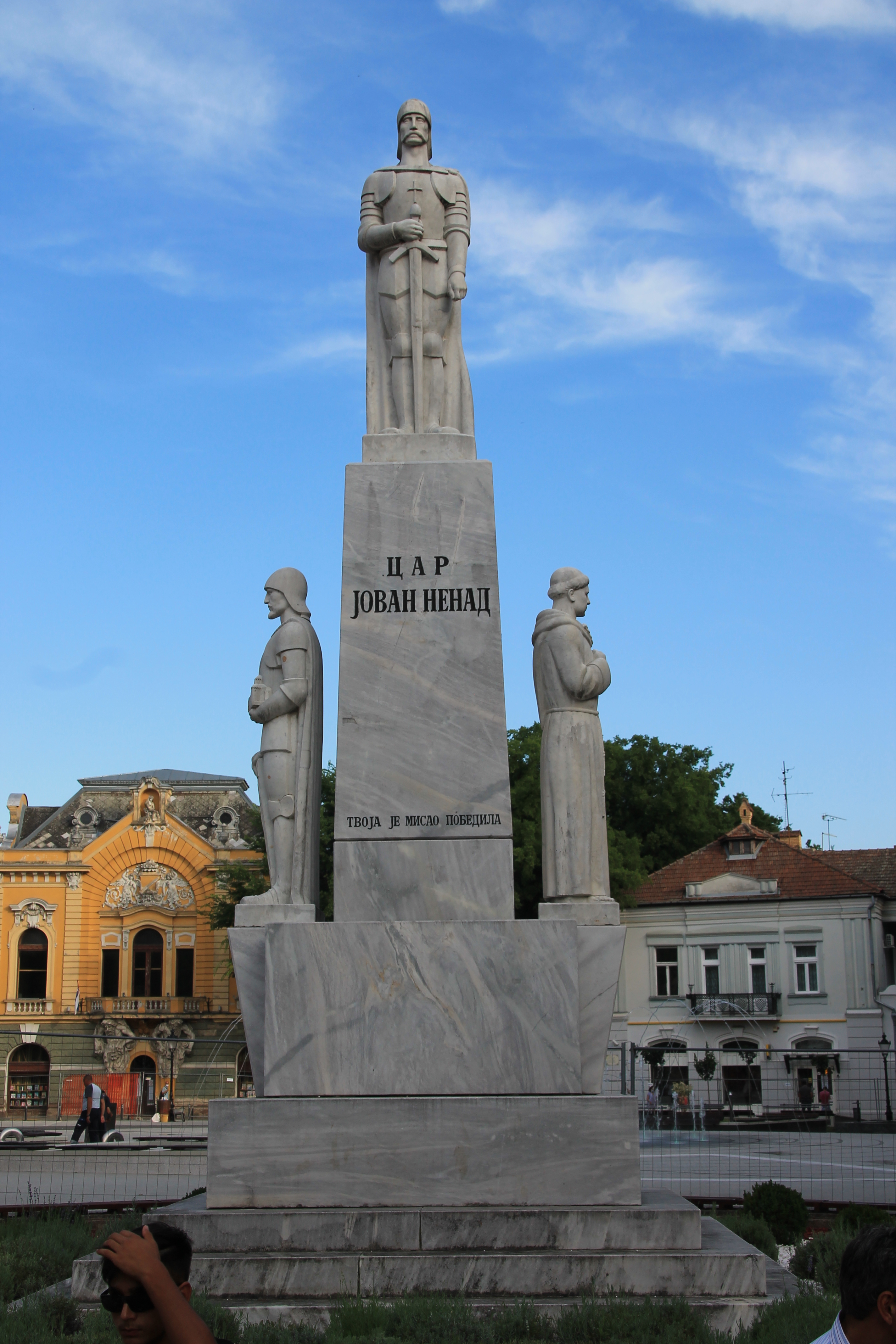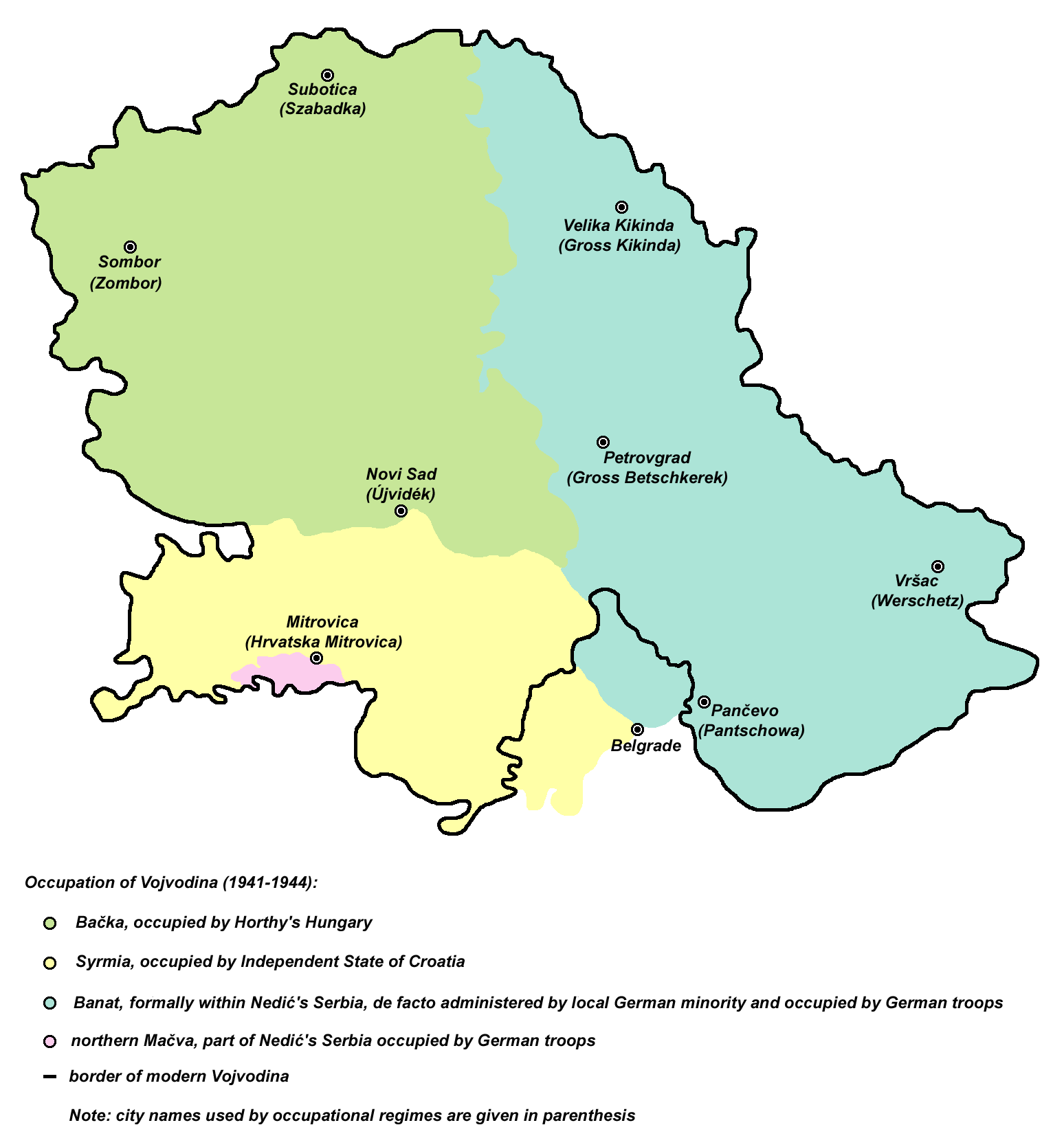|
Bajmok
Bajmok ( sr-Cyrl, Бајмок; , ) is a village located in the municipality of Subotica, in the North Bačka District, Vojvodina, Serbia. The village is ethnically mixed and its population numbered 7,414 inhabitants as of 2011 census. Name In Serbian Cyrillic the village is known as Бајмок, in Serbian Latin as ''Bajmok'', in Hungarian as ''Bajmok'', in Bunjevac as ''Bajmok'' or ''Bajmak'', in Croatian as ''Bajmak'' (since 2009) or ''Bajmok'' (before 2009), and in German as ''Nagelsdorf''. History The first written documents relating to Bajmok came from the fifteenth century. Then the village was for the first time officially mentioned as a village. King Matthias gave it to his mother, Erzsébet Szilágyi. The deed of donation was confirmed on 16 February 1462. During Ottoman administration (16th-17th century), two villages with this name were mentioned: Bajmok and Novi Bajmok. Both villages had about 20 houses. Population was composed of ethnic Serbs. These villag ... [...More Info...] [...Related Items...] OR: [Wikipedia] [Google] [Baidu] |
Subotica
Subotica (, ; , , ) is a List of cities in Serbia, city in Central Europe and the administrative center of the North Bačka District in the autonomous province of Vojvodina, Serbia. Formerly the largest city of Vojvodina region, contemporary Subotica is now the second largest city in the province, following the city of Novi Sad. According to the 2022 census, the urban area of the city (including adjacent settlement of Palić) has a population of 94,228, and the population of metro area (the administrative area of the city) stands at 123,952 people. Name The name of the city has changed frequently over time.History of Subotica Retrieved 8 September 2022. The earliest known written name of the city was ''Zabotka'' or ''Zabatka'', which dates from 1391. It is the origin of the current Hungarian n ... [...More Info...] [...Related Items...] OR: [Wikipedia] [Google] [Baidu] |
Bunjevci
Bunjevci ( sh-Latn-Cyrl, separator=" / ", Bunjevci, Буњевци, ; sh-Latn-Cyrl, label=, separator=" / ", Bunjevac, Буњевац, sh-Latn-Cyrl, label=, separator=" / ", Bunjevka, Буњевка) are a South Slavs, South Slavic sub-ethnic group of Croats living mostly in the Bačka area of northern Serbia and southern Hungary (Bács-Kiskun County), particularly in Baja, Hungary, Baja and surroundings, in Croatia (e.g. Primorje-Gorski Kotar County, Lika-Senj County, Slavonia, Split-Dalmatia County, Vukovar-Srijem County), and in Bosnia-Herzegovina. They originate from Western Herzegovina. As a result of the List of Ottoman conquests, sieges and landings, Ottoman conquest, some of them migrated to Dalmatia, from there to Lika and the Croatian Littoral, and in the 17th century to the Bačka, Bácska area of Austro-Hungarian Empire, Hungary. Bunjevci who remained in Bosnia and Herzegovina, as well as those in modern Croatia today, maintain that designation chiefly as a regiona ... [...More Info...] [...Related Items...] OR: [Wikipedia] [Google] [Baidu] |
List Of Populated Places In Serbia
This is the list of populated places in Serbia (excluding Kosovo), as recorded by the Demographics of Serbia, 2002 census, sorted alphabetically by Municipalities of Serbia, municipalities. Human settlement, Settlements denoted as "Urban area, urban" (towns and city, cities) are marked bold. Population for every settlement is given in brackets. The same list in alphabetic order is in List of populated places in Serbia (alphabetic). A Ada (Serbia), Ada Aleksandrovac Aleksinac Alibunar Apatin Aranđelovac Arilje B Babušnica Bač, Serbia, Bač Bačka Palanka Bačka Topola Bački Petrovac Bajina Bašta Barajevo Batočina Bečej Bela Crkva (Vojvodina), Bela Crkva Bela Palanka Beočin Blace Bogatić Bojnik Boljevac Bor (Serbia), Bor Bosilegrad Brus Bujanovac C Crna Trava Č Čačak Čajetina Čoka Čukarica Ć Ćićevac Ćuprija D Despotovac Dimitrovgrad (Serbia), Dimitrovgrad Doljevac G Gadžin Han Golubac ... [...More Info...] [...Related Items...] OR: [Wikipedia] [Google] [Baidu] |
Matthias Corvinus Of Hungary
Matthias Corvinus (; ; ; ; ; ) was King of Hungary and Croatia from 1458 to 1490, as Matthias I. He is often given the epithet "the Just". After conducting several military campaigns, he was elected King of Bohemia in 1469 and adopted the title Duke of Austria in 1487. He was the son of John Hunyadi, Regent of Hungary, who died in 1456. In 1457, Matthias was imprisoned along with his older brother, Ladislaus Hunyadi, on the orders of King Ladislaus the Posthumous. Ladislaus Hunyadi was executed, causing a rebellion that forced King Ladislaus to flee Hungary. After the King died unexpectedly, Matthias's uncle Michael Szilágyi persuaded the Estates to unanimously proclaim the 14-year-old Matthias as king on 24 January 1458. He began his rule under his uncle's guardianship, but he took effective control of government within two weeks. As king, Matthias waged wars against the Czech mercenaries who dominated Upper Hungary (today parts of Slovakia and Northern Hungary) and ag ... [...More Info...] [...Related Items...] OR: [Wikipedia] [Google] [Baidu] |
Occupation Of Vojvodina, 1941-1944
The military occupation of the Kingdom of Yugoslavia, Yugoslav region of Vojvodina (now in Serbia) from 1941 to 1944 was carried out by Nazi Germany and its client states / puppet regimes: Miklós Horthy, Horthy's Kingdom of Hungary (1920–1946), Hungary and Independent State of Croatia. In 1941, during World War II, Nazi Germany, Kingdom of Italy (1861–1946), Fascist Italy and Hungary invaded and occupied Yugoslavia. The modern-day Vojvodina region (then the northern part of Danube Banovina province of Yugoslavia) was divided into three occupation zones: Banat (1941–1944), Banat was part of the area governed by the Military Administration in Serbia and was de facto under control of its ethnic German minority; Bačka was attached to Miklós Horthy, Horthy's Hungary during World War II, Hungary; while Syrmia was attached to Independent State of Croatia. The occupation lasted until 1944, when the region came under control of the Soviet Red Army and Yugoslav partisans. War cr ... [...More Info...] [...Related Items...] OR: [Wikipedia] [Google] [Baidu] |
World War II
World War II or the Second World War (1 September 1939 – 2 September 1945) was a World war, global conflict between two coalitions: the Allies of World War II, Allies and the Axis powers. World War II by country, Nearly all of the world's countries participated, with many nations mobilising all resources in pursuit of total war. Tanks in World War II, Tanks and Air warfare of World War II, aircraft played major roles, enabling the strategic bombing of cities and delivery of the Atomic bombings of Hiroshima and Nagasaki, first and only nuclear weapons ever used in war. World War II is the List of wars by death toll, deadliest conflict in history, causing World War II casualties, the death of 70 to 85 million people, more than half of whom were civilians. Millions died in genocides, including the Holocaust, and by massacres, starvation, and disease. After the Allied victory, Allied-occupied Germany, Germany, Allied-occupied Austria, Austria, Occupation of Japan, Japan, a ... [...More Info...] [...Related Items...] OR: [Wikipedia] [Google] [Baidu] |
World War I
World War I or the First World War (28 July 1914 – 11 November 1918), also known as the Great War, was a World war, global conflict between two coalitions: the Allies of World War I, Allies (or Entente) and the Central Powers. Fighting took place mainly in European theatre of World War I, Europe and the Middle Eastern theatre of World War I, Middle East, as well as in parts of African theatre of World War I, Africa and the Asian and Pacific theatre of World War I, Asia-Pacific, and in Europe was characterised by trench warfare; the widespread use of Artillery of World War I, artillery, machine guns, and Chemical weapons in World War I, chemical weapons (gas); and the introductions of Tanks in World War I, tanks and Aviation in World War I, aircraft. World War I was one of the List of wars by death toll, deadliest conflicts in history, resulting in an estimated World War I casualties, 10 million military dead and more than 20 million wounded, plus some 10 million civilian de ... [...More Info...] [...Related Items...] OR: [Wikipedia] [Google] [Baidu] |
Germans
Germans (, ) are the natives or inhabitants of Germany, or sometimes more broadly any people who are of German descent or native speakers of the German language. The Basic Law for the Federal Republic of Germany, constitution of Germany, implemented in 1949 following the end of World War II, defines a German as a German nationality law, German citizen. During the 19th and much of the 20th century, discussions on German identity were dominated by concepts of a common language, culture, descent, and history.. "German identity developed through a long historical process that led, in the late 19th and early 20th centuries, to the definition of the German nation as both a community of descent (Volksgemeinschaft) and shared culture and experience. Today, the German language is the primary though not exclusive criterion of German identity." Today, the German language is widely seen as the primary, though not exclusive, criterion of German identity. Estimates on the total number of Germ ... [...More Info...] [...Related Items...] OR: [Wikipedia] [Google] [Baidu] |
Serbian Vojvodina
The Serbian Vojvodina () was a short-lived self-proclaimed autonomous province within the Austrian Empire during the Revolutions of 1848, which existed until 1849 when it was transformed into the new (official) Austrian province named Voivodeship of Serbia and Temes Banat. It was created and led by political leaders of Serbs in regions of Syrmia, Banat, Bačka and Baranja. The Serbian Vojvodina gave its name to the present Vojvodina autonomous region in Serbia. Name In German, it was known as . In Serbian is also known as (Serbian Cyrillic: , ; "Serbian Voivodeship"), (Serbian Cyrillic: ; "Serbian Vojvodovina"), and (Serbian Cyrillic: ; "Vojvodovina of Serbia"). History During the 1848 Revolution, the Hungarians demanded independence from the Austrian Empire. However, they did not recognize the national rights of other nationalities which lived in the Habsburg Kingdom of Hungary at that time. Therefore, the Serbs of Vojvodina took action to separate from the Kingdom of ... [...More Info...] [...Related Items...] OR: [Wikipedia] [Google] [Baidu] |
Kingdom Of Hungary
The Kingdom of Hungary was a monarchy in Central Europe that existed for nearly a millennium, from 1000 to 1946 and was a key part of the Habsburg monarchy from 1526-1918. The Principality of Hungary emerged as a Christian kingdom upon the Coronation of the Hungarian monarch, coronation of the first king Stephen I of Hungary, Stephen I at Esztergom around the year 1000;Kristó Gyula – Barta János – Gergely Jenő: Magyarország története előidőktől 2000-ig (History of Hungary from the prehistory to 2000), Pannonica Kiadó, Budapest, 2002, , pp. 37, 113, 678 ("Magyarország a 12. század második felére jelentős európai tényezővé, középhatalommá vált."/"By the 12th century Hungary became an important European factor, became a middle power.", "A Nyugat részévé vált Magyarország.../Hungary became part of the West"), pp. 616–644 his family (the Árpád dynasty) led the monarchy for 300 years. By the 12th century, the kingdom became a European power. Du ... [...More Info...] [...Related Items...] OR: [Wikipedia] [Google] [Baidu] |
Hungarian Revolution Of 1848
The Hungarian Revolution of 1848, also known in Hungary as Hungarian Revolution and War of Independence of 1848–1849 () was one of many Revolutions of 1848, European Revolutions of 1848 and was closely linked to other revolutions of 1848 in the Habsburg areas. Although the revolution failed, it is one of the most significant events in Hungary's modern history, forming the cornerstone of modern Hungarian national identity—the anniversary of the Revolution's outbreak, 15 March, is one of Hungary's three Public holidays in Hungary, national holidays. In April 1848, Hungary became the third country of Continental Europe (after France, in 1791, and Belgium, in 1831) to enact a law implementing democratic parliamentary elections. The new suffrage law (Act V of 1848) transformed the old feudal parliament (The Estates, Estates General) into a democratic representative parliament. This law offered the widest right to vote in Europe at the time. The April laws utterly erased all pri ... [...More Info...] [...Related Items...] OR: [Wikipedia] [Google] [Baidu] |





